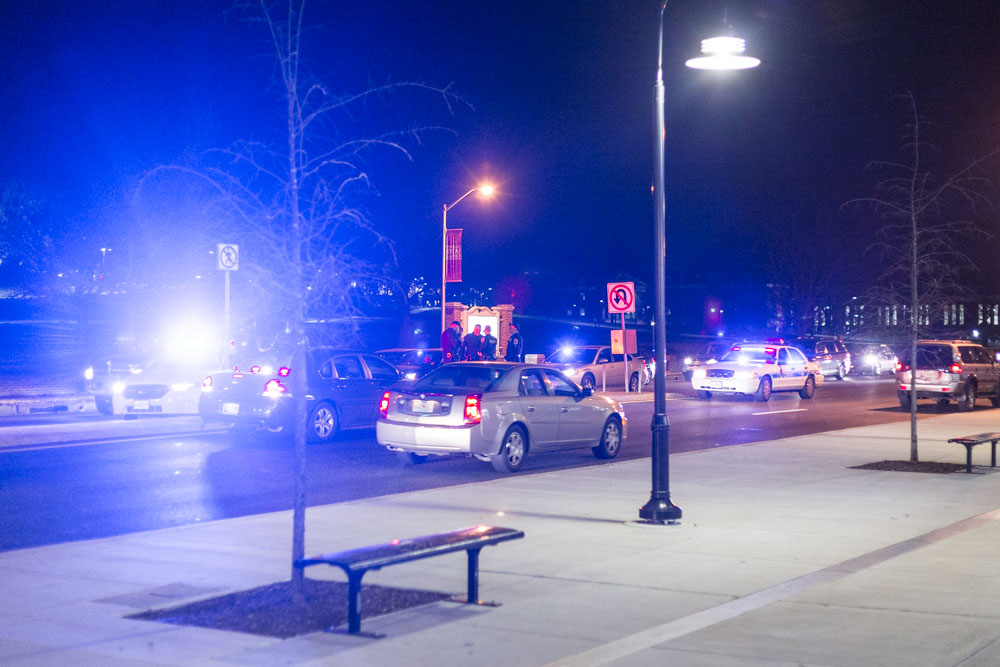Of the 920 vehicles that passed through a University of Maryland Police sobriety checkpoint, officers arrested two drivers and pulled over 11 cars “for further investigation,” spokeswoman Sgt. Rosanne Hoaas said.
The checkpoint ran from about 7:30 p.m. to 10:15 p.m. on March 23 and was held on the northbound side of Route 1 between College Avenue and Fraternity Row, Hoaas said. Prince George’s County Police joined the department in the initiative and was stationed on Route 1’s southbound side near Turner Hall.
“We funneled all the traffic into one lane, and as the cars came through, every car was stopped and the officer went up and talked to the driver,” University Police Lt. Robert Jenshoej said. “If any of my officers observed any clues that might indicate any level of impairment, the driver was instructed to pull into Frat Row, and we conducted our sobriety field test.”
[Read more: UMD students experienced the dangers of texting and driving through virtual reality]
The checkpoint results were consistent with previous years, said Jenshoej, who organized the effort.
On average, University Police conducts two checkpoints each year. For the past few years, the department has held one checkpoint in March and another in the late summer or early fall, Jenshoej said.
“It is on an as-needed basis,” Jenshoej said. “Issues we have going on might dictate that a check point might be a really good thing here.”
Sobriety field tests consist of tests at traffic stops to determine levels of impairment when driving, including the horizontal gaze nystagmus test, walk-and-turn test and one-leg stand test, according to AAA’s DUI Justice Link.
The horizontal gaze nystagmus test looks for indicators of impairment in the eyes, while the walk-and-turn test makes people take nine heel-to-toe steps along a straight line. In the one-leg stand test, the subject stands on one foot and counts out loud, according to AAA.
[Read more: Police arrest 11 motorists at Route 1 DUI checkpoint]
This checkpoint, which was done in partnership with this university’s DUI Institute, a week-long overnight training held by the Institute of Advanced Law Enforcement, was held in support of a movement to combat drunk driving in Maryland, according to a March 22 news release from University Police. This year’s institute will take place from June 4 to June 9.
“The Institute began as a series of discussions between the Maryland Highway Safety Office and the University of Maryland, and grew out of the observation that there was a need to build a high-quality; academic course for law enforcement agents who were or who wanted to be leaders in the area of alcohol-impaired driving enforcement,” according to the Institute.
Between 2003 and 2012, 1,716 people in Maryland were killed in crashes involving a drunk driver, according to the U.S. Centers for Disease Control. About 2 percent of drivers reported getting behind the wheel after drinking too much, according to 2012 CDC data.
Though University Police’s goal is to take impaired drivers from behind the wheel, Jenshoej said he hopes its biggest effect will be on increasing public awareness of this issue.
“Whether you are driving through [the checkpoint] impaired or sober, it makes people very aware of how they are driving,” Jenshoej said. “It is as much as a public awareness campaign as it is anything to do with enforcement, if not more so.”



